Click to view our Accessibility Statement or contact us with accessibility-related questions















DCX vs DCD vs DCL - Drop’s Keycap Profiles Explained

search
close
Sort by: Newest
keyboard_arrow_down
Aristarco
209
Apr 23, 2024
I hope some artisans, like Dwarf Factory's, contemplate the making of some caps in DC* profile. Most of them are in either sphere top or SA R1 and they stand out like a sore thumb instead of a piece of art that belongs there when put in a cylindrical profile set.

HoffmanMyster
3234
Community
Apr 23, 2024
AristarcoI can't share too much at this time, but there is something in the works for this! 👍

Rowdy
20
Apr 19, 2024
DCX is great - comparable to Cherry and perhaps better than JTK. The ongoing lack of a 1.25 "menu" key is disappointing (and has been raised before).
Haven't tried DCD or DCL yet - my first sets of these are in production at the moment.
MT3 is fantastic, I much prefer it over sculptured SA. I probably have a slight preference for uniform R3 SA over MT3 though.
Are there any plans for uniform R3 MT3?

HoffmanMyster
3234
Community
Apr 23, 2024
You know what, I completely misspoke, I'm sorry. I remembered a conversation from months ago related to this, but it was actually about an SA set that had been available in uniform profile and is now sold as a sculpted profile (took me a while to dig it up to confirm). Totally my fault for not doing better fact-checking before responding.
Sorry for getting you excited only for ultimate disappointment. :(
You're absolutely right though about the versatility, and it would be really interesting to see an all-R3 MT3 set after all (would have to be dye-sub, due to tooling constraints).

Aristarco
209
Apr 23, 2024
HoffmanMysterAaww... well, at least the idea is there. Hope someone makes it reality. There's so much to do in the realm of keebs.
Tickety-Tappin
6
Apr 18, 2024
Do yourself a favor, IMHO, and go with more MT3 - more often. There are gazillions of cherry clones out there and honestly not enough about yours to recommend Drop over all the others. And so, the only difference is color and cost. MT3 on the other hand, is primarily about the unique shape and sound. And there aren't many other keysets that come close to MT3 in shape or sound (or quality). You're just not going to find that someplace else. Bottom line? If Drop doesn't make it in MT3, it doesn't exist. If Drop doesn't make it in DCD, DCQ, DCT, DCP, or any of the other unmemorably-named flavors, there's no question someone else has it. Possibly cheaper and with similar quality. If you do a new MT3 run, ditch the LOTR obsession and go with a stealth set (black on grey) or with the printing on the front sides instead of the tops. TBH? Maybe create some R0 - R4 "blank" keycaps in a variety of base colors *and widths* matching current themes (Fairlane, Godspeed, Camillo, etc.) to help out people with nonstandard keyboards that desperately need an alternate or modified key that doesn't come in the existing alts and mods that you sell?
theadept
0
Apr 18, 2024
jansportsucksThis is what I was wondering too. The last article talks about profiles, but doesn't specifically show or compare the DCX to the DCD to the DCL to the MT3... I would definitely be nice to have one of those side profile charts showing the different profiles! HoffmanMyster

Aristarco
209
Apr 23, 2024
miazI agree!! Some of the Nordic caps are compatible with Latin American Spanish (my country's official layout) and it would serve both our languages.

HoffmanMyster
3234
Community
Apr 17, 2024
YagyuuNot so far. It was designed to be able to produce both ABS and PBT from its inception though, and we are actually working on the first PBT DCX set(s) right now.
thesloppyfloppy
23
Apr 10, 2024
Thank you @HoffmanMyster this was long over due! I'm really glad you cleared up any doubts that the other DC* flavors are all "cherry" profile.
(Edited)
PRODUCTS YOU MAY LIKE
Trending Posts in Mechanical Keyboards

jdsvdropper
Drop ENTER keyboard with DCX Sleeper Mac variants and Rocky Bird
Black Drop ENTER keyboard with DCX Sleeper Mac variants for the Option and Command keys, and Rocky Bird red and black DCX keycaps.
Nov 19, 2024
AngryTank
Favorite Artisans
COME FORTH SHENRON!
Purple, Dragon Balls, and Seta! What more does a simple man need?
Nov 17, 2024
InsufferablePedant
ZealPC Aqua Zilents
Please ignore the filthy keyboard, it's been on a shelf for a minute.
Nov 15, 2024
Kyle-L
How to sell things on Drop & How Drop charge them?
Hi , this Kyle from China. Since a month ago, my team wanted to build a brand to produce the high quality of mechanical keyboard and headset to sell aboard. Now we already got the license to do so, and we can't wait to bring our products to meet everyone. But the products are still in the period of designing, it would take some time :( There are some questions we can't find the ways to solve - how to sell keyboard on Drop, and the details about how Drop charge per product? - Actually I sent an email to Drop Studio for some questions, but I didn't receive the answer.( Drop Studio also mentioned that they can contact me only if they were interested in my design / products ). So I'm here ask for help. If anyone can answer my question, I would really appreciate it :)
Nov 14, 2024

Neekolas714
Kicks & Keebs
Alpha Bravo Smoke
Finally finished my Keychron V5. Smooth, beautiful and stylish. What else could there be?
Nov 13, 2024

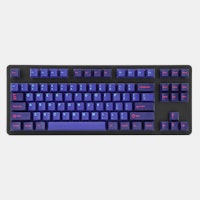
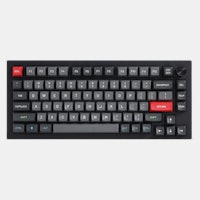
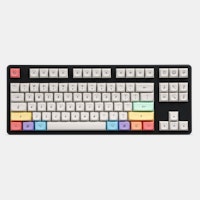
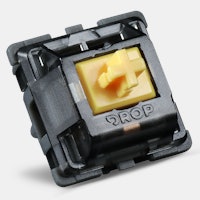

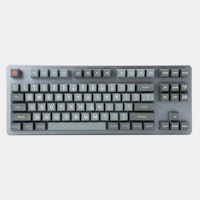
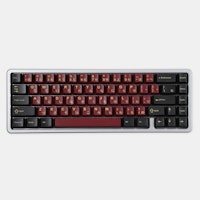
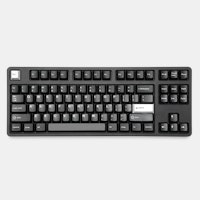
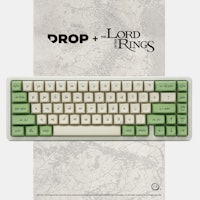








Cylindrical Profiles To recap the previous article on the topic, one of the most basic ways to separate various keycap profiles is by shape (cylindrical, spherical, or flat). DCX, DCD, and DCL are all cylindrical profiles. The most famous cylindrical profile is Cherry profile, as defined by the original manufacturer of the keycaps—Cherry. GMK now owns those tools, and as such, only they can technically claim to produce “Cherry” profile keycaps. Similar keycap profiles are often called Cherry profile colloquially, but are in actuality slightly different. For the sake of not splitting hairs, all of the cylindrical profiles discussed here are “close enough” to Cherry that you would probably not be able to tell a difference from shape alone when typing. What differentiates DCX, DCD, and DCL then?
DCX - Drop Cylindrical “X” (ABS or PBT, double-shot (PBT can also then be dye-subbed as well)) DCD - Drop Cylindrical Dye-Sub (PBT, dye-sub) DCL - Drop Cylindrical Lumen (ABS, laser-ablated shine-through) Keysterine - Transparent ABS, UV thermal legends (unlikely to be confused for the others, included for completeness)
Left: DCD, Right: DCX A combination of material options and legending methods are what ultimately separate the three “DC” cylindrical profiles. DCX tooling can be used to make either ABS or PBT keycaps, and they will always be double-shot. DCX PBT can then be dye-subbed after injection, since the material is compatible. DCD, on the other hand, is limited to PBT material, single shot—so must be dye-subbed to impart legends on the caps. DCL is focused solely on shine-through capabilities, featuring a coated translucent base which is exposed in the legending process.
DCX Novelty Tooling
Spherical Profile Rounding out Drop’s profile portfolio is MT3, our in-house spherical profile developed in partnership with Matt3o. There are actually two different sets of MT3 tooling, for the two types of materials/legends available. This is one reason why kitting can sometimes be different depending on material choice for the keycap set. MT3 ABS - ABS, double-shot MT3 PBT - PBT, dye-sub
Image credit: @modest.gg Which profile is your favorite? What sets should be re-run in a new profile?